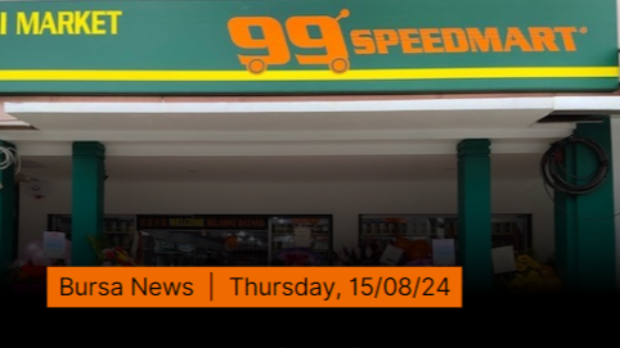Giant metal stockpile in Singapore sparks rare warehouse battle
Tan KW
Publish date: Fri, 16 Aug 2024, 09:39 AM
Metal stockpiles are surging in Singapore, and slowing global demand is only part of the reason.
Refined zinc and lead have been pouring into Singapore since the middle of last year, making one of the smallest countries in the world a critical vault for companies including Trafigura Group and Glencore plc.
The combined inventories of the two base metals in the London Metal Exchange’s (LME) Singapore-registered warehouses have grown more than 10-fold since May 2023 to a record of almost 430,000 tons in recent weeks, according to bourse data.
Behind it, in part, is the slowdown in the global economy. While bets on a US recession are rising, the biggest culprit is China, where a years-long property crisis and a lack of consumer spending have rippled across the globe.
“Soft demand in China is the ultimate reason,” said Jia Zheng, the head of trading with Shanghai Soochow Jiuying Investment Management Co, “Traders are waiting for the Chinese demand recovery, so they can ship these supplies to the world’s largest market quickly.”
That’s not the entire story, though.
Singapore has been an important distribution centre for base metals for decades. On Jurong Island off Singapore’s southwest coast, and in Sembawang in the north, stacks of metal can be left for years or quickly transferred to ocean-going ships when needed.
At current levels, the inventories accumulating in Singapore require approximately 140,000 sq m of storage space. That’s a large area for land-limited Singapore, where costs for storage, as well as transportation and labour, are relatively high.
The buildup in pricey Singapore - when cheaper LME warehouses are available in Malaysia and South Korea - may have more to do with a trading strategy that allows some companies to benefit from the higher storage costs associated with the city state than any fluctuations in demand.
With storage costs high, traders are boosting their revenue through lucrative “rent sharing” agreements with metals warehouses, according to people familiar with the matter, who asked not to be identified discussing private information.
The agreements - more commonly used in copper and aluminium warehouses in other countries - can result in about half of the storage costs getting shared with trading companies. But they come with a financial risk for warehouse operators.
In order to lure traders to their warehouses in Singapore, the operators have not only agreed to share some of their storage fees, they have also offered financial incentives worth as much as US$50 per ton to attract metal to their facility.
Normally, warehouses know they can pass those costs on to clients who eventually buy the metals from storage. But if the traders decide to shift their inventories to other warehouses in the country or region - in some cases for a bigger cut of the rent costs - there is no client to compensate the warehouse operators for their sunk costs. They lose both the incentives paid out and the repayment on the shared rents.
Historically, warehouse operators had a tacit understanding that they wouldn’t try to undercut each other’s business that way. But when a trader decides to shift where metals are stored, the warehouses have little choice but to comply.
It’s not just Trafigura and Glencore pushing this model for metals storage. Citigroup Inc has also been shifting some metals from competitor’s warehouses to ones it has been able to strike rent-sharing agreements with, according to the people. There’s nothing improper about the strategy, but it does present new risks to the warehouses.
In addition, using Singapore as an inventory hub can boost prices in other parts of the world by placing a portion of the global metals supply distant from nations outside Asia that may also need the metals.
Trafigura, Glencore and Citigroup declined to comment. In an emailed statement, the LME said it had a comprehensive set of warehousing rules, including restrictions on “evergreen” rent deals. Those rules, introduced in 2019, were designed to protect warehouses from incidents where parties purchase metals warrants purely to extract a post-sale financial incentive.
The downbeat outlook for metals demand means the risks for the warehouses aren’t going away. And while there are other storage sites in Southeast Asia, Singapore’s location and established base of traders and banks means that it can provide sufficient liquidity for these inventories, both in a financial and logistical sense, said Henry Pang, an industry veteran who helped to set up the first Asian LME warehouse in Singapore in the 1980s.
“Placing these metals in Singapore is the best option for the traders,” said Pang, who was the head of warehousing firm C Steinweg Group’s Asian business before his retirement in 2020. For now, that’s what matters.
- Bloomberg
More articles on Good Articles to Share
Created by Tan KW | Aug 16, 2024
Created by Tan KW | Aug 16, 2024
Created by Tan KW | Aug 16, 2024
Created by Tan KW | Aug 16, 2024
Created by Tan KW | Aug 16, 2024










.png)










